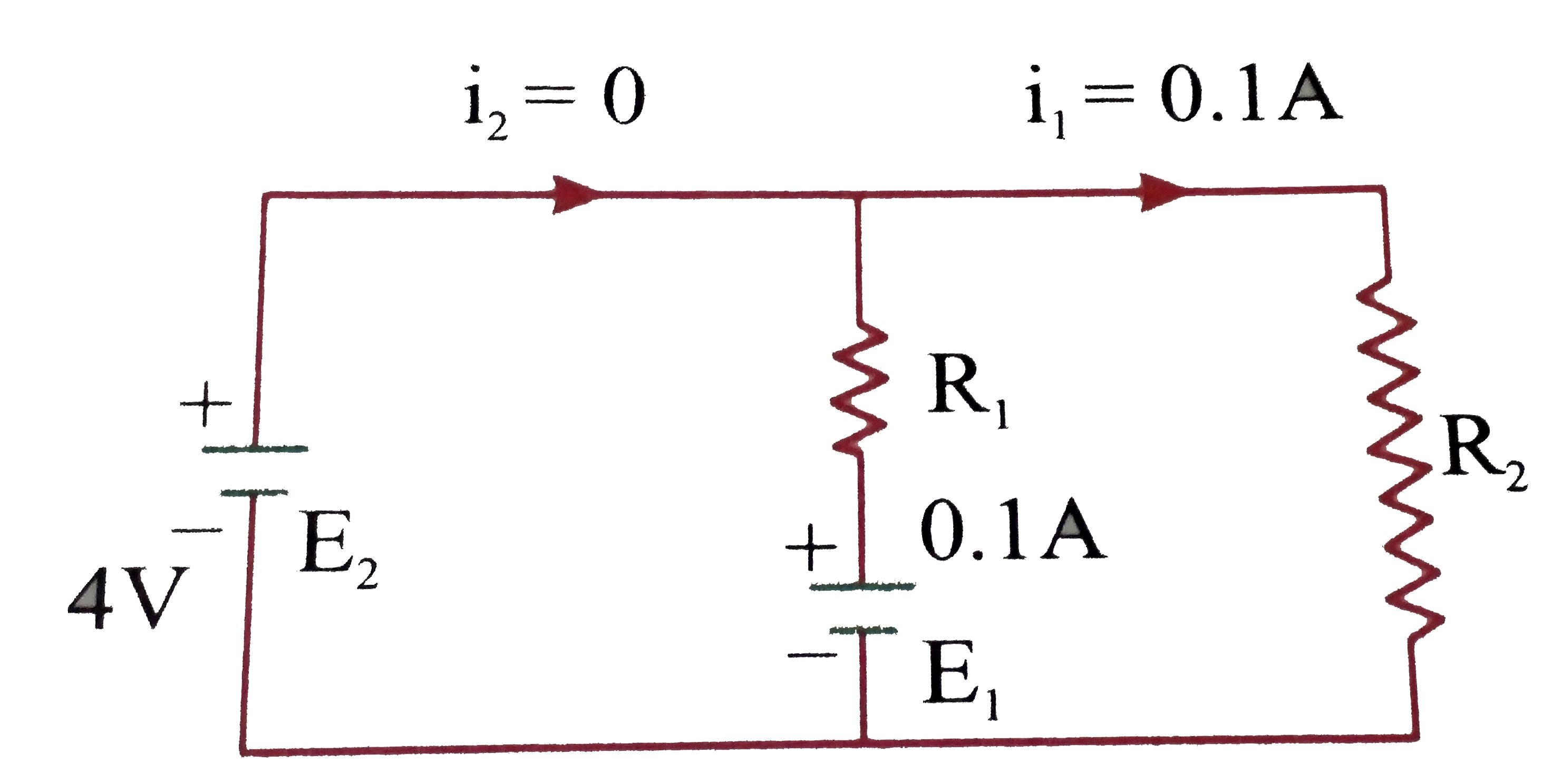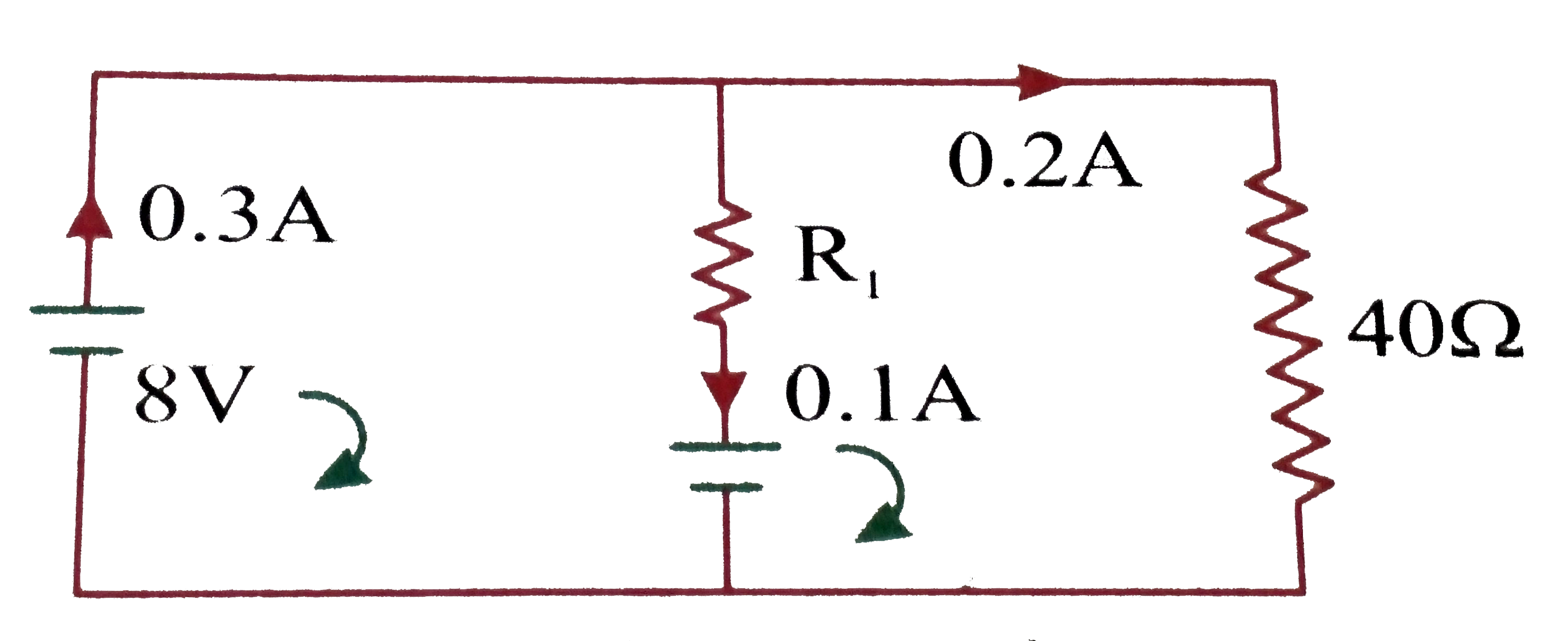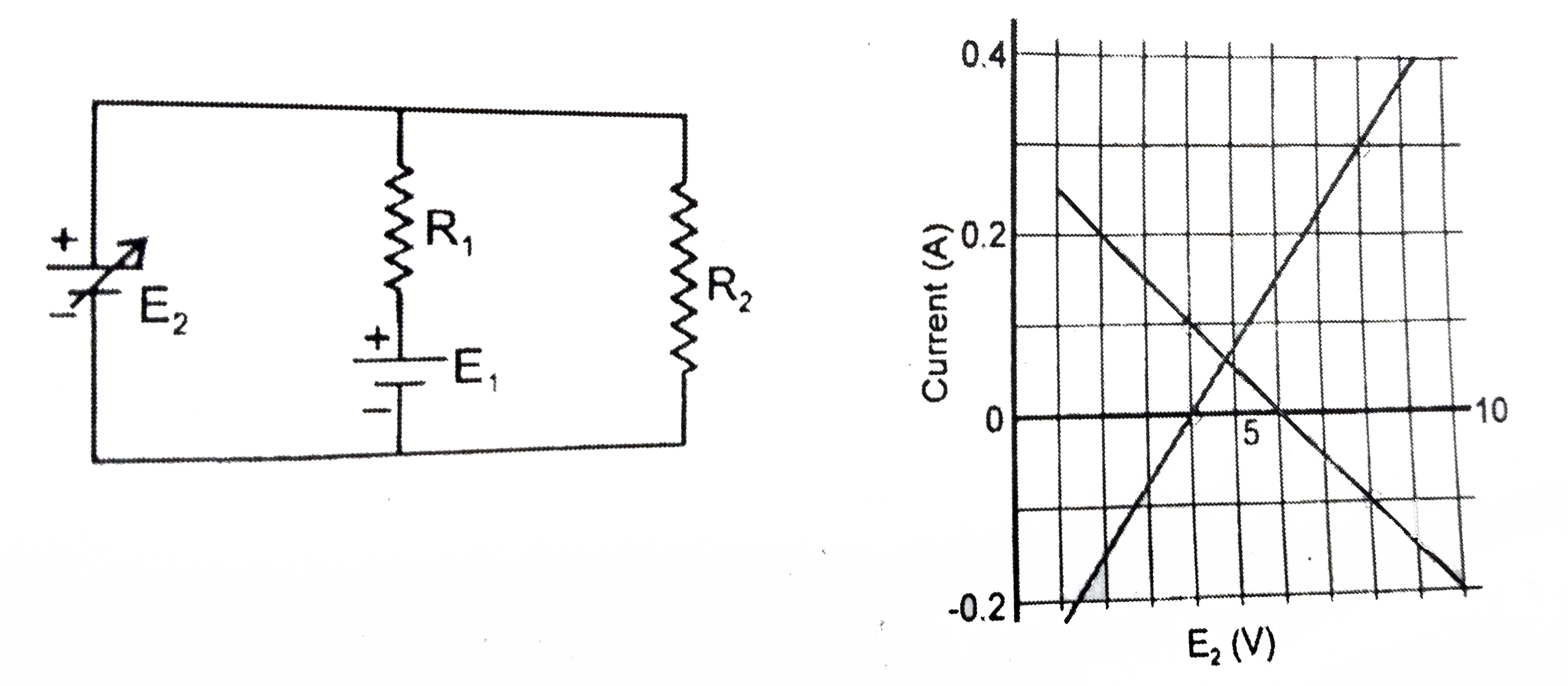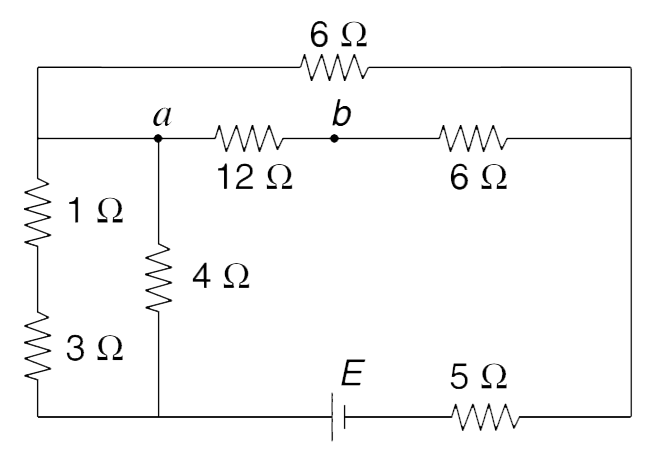In the circuit given in the figure, both batteries are ideal . Emf E1 of battery 1 has a fixed value, but emf E2 of battery 2 can be varied between 1.0Vand10.0V . The graph gives the currents through the two batteries as a function of E2 but are not marked as which plot corresponds to which battery. But for both plots, current is assumed to be negative when the direction of the current through the battery is opposite to the direction of that battery's emf (direction of emf is from negative to positive.)
 ,
,
The resistance R2 is equal to
A
10Ω
B
20Ω
C
30Ω
D
40Ω
Video Solution
Text Solution
The correct Answer is:D


i1=0.1A,E2=4V
i2=0 As 0.1R1+0.1R2+0.1R2−E1=0.1
R2−4V=0
R2=40Ω
Now i2=0.3A,
i1=−0.1A
E2=8V
Now 0.1R1+E1−8=0
0.1+3−E1=0
0.2R1−4=0⇒R1=40.2=20Ω
E1=2+4=6V
|
Topper's Solved these Questions
- CURRENT ELECTRICITYBook:NARAYNAChapter:CURRENT ELECTRICITYExercise:Level 6
Explore 43 Videos
- CURRENT ELECTRICITYBook:NARAYNAChapter:CURRENT ELECTRICITYExercise:NCERT Based Questions
Explore 13 Videos
- COMMUNICATION SYSTEMBook:NARAYNAChapter:COMMUNICATION SYSTEMExercise:Level-II(H.W)
Explore 25 Videos
- DUAL NATURE OF RADIATION AND MATTERBook:NARAYNAChapter:DUAL NATURE OF RADIATION AND MATTERExercise:ASSERTION AND REASON
Explore 15 Videos
Similar Questions
Knowledge Check
In the circuit given in the figure, both batteries are ideal . Emf E1 of battery 1 has a fixed value, but emf E2 of battery 2 can be varied between 1.0Vand10.0V . The graph gives the currents through the two batteries as a function of E2 but are not marked as which plot corresponds to which battery. But for both plots, current is assumed to be negative when the direction of the current through the battery is opposite to the direction of that battery's emf (direction of emf is from negative to positive.)

The value of emf E1 isA8 VB6 VC4 VD2 VIn the circuit given below, both batteries are ideal. Emf E1 of battery 1 has a fixed value, but emf E1 of battery 2 can be varied between 1.0 V and 10.0 and 10.0 V. The graph gives the currents through the two batteries as a function of E2, but are not marked as which plot corresponds to which battery. But for both ploth, current is assumed to be negative when the direction of the current through the cattery is oppositi the direction of that battery's emf. (Direction of emf is from negative to positive)

The resistance R1 has valueA10ΩB20ΩC30ΩD40Ω
In the circuit givenn below, both batteries are ideal. EMF E1 of battery 1 has a fixed value but emf E2 of battery 2 can be varied between 1.0 V and 10.0 V the graph gives the currents through the two batteries as a function of E2, but are not marked as shown plot corresponds to which battery. but both plots, current is assumed to be negative when the direction of the current through the battery is opposite the direction of that battery's emf. (direction of emf is from negative to positive).
Q. The resistance R1 has valueA10ΩB20ΩC30ΩD40Ω
In the given figure, the current through the 20 V battery is

View SolutionIn the circuit shown, the resistances are given in ohms and the battery is assumed ideal with emf equal to 3.0 V.

View SolutionTwo ideal diodes are connected to a battery as shown in the circuit. The current supplied by the battery is

View SolutionTwo ideal diodes are connected to a battery as shown in the circuit. The current supplied by the battery is

View SolutionTwo ideal diodes are connected to a battery as shown in the circuit. The current supplied by the battery is

View Solution



